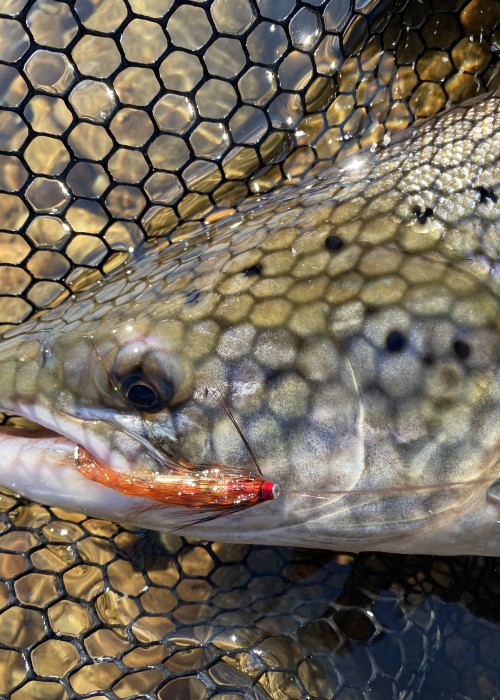
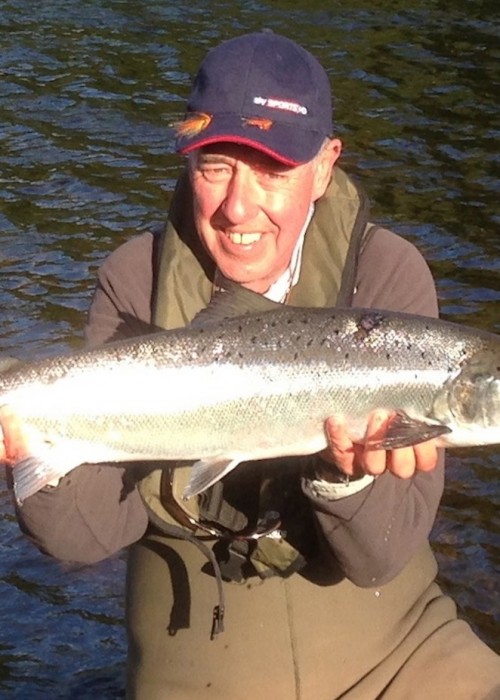
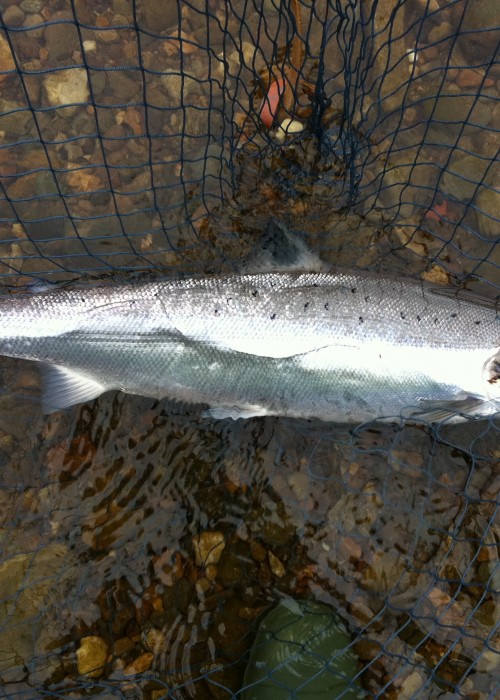
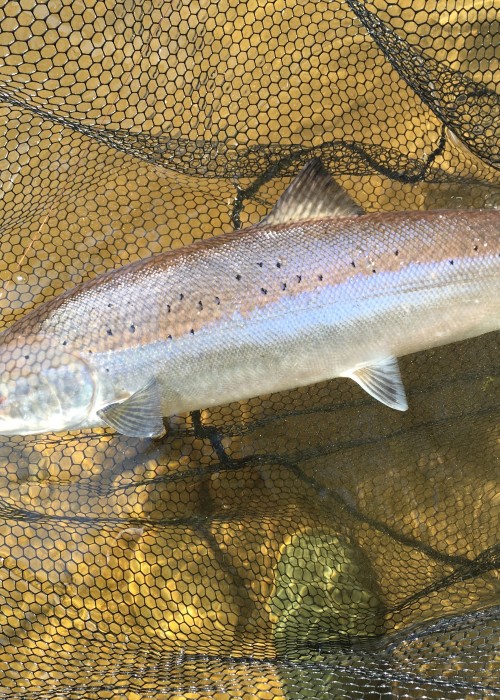
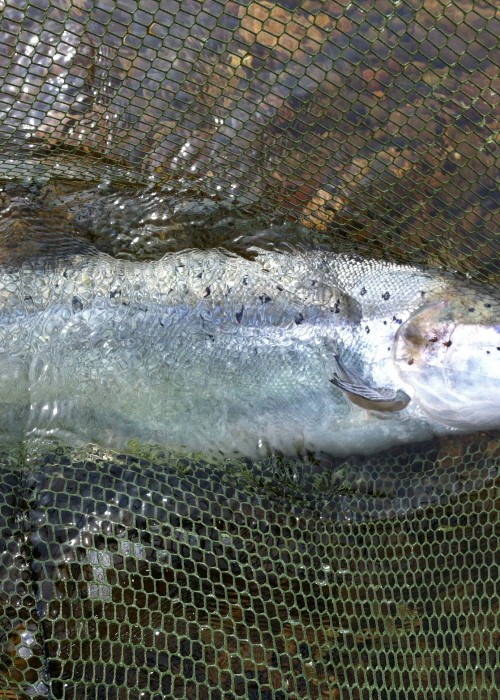

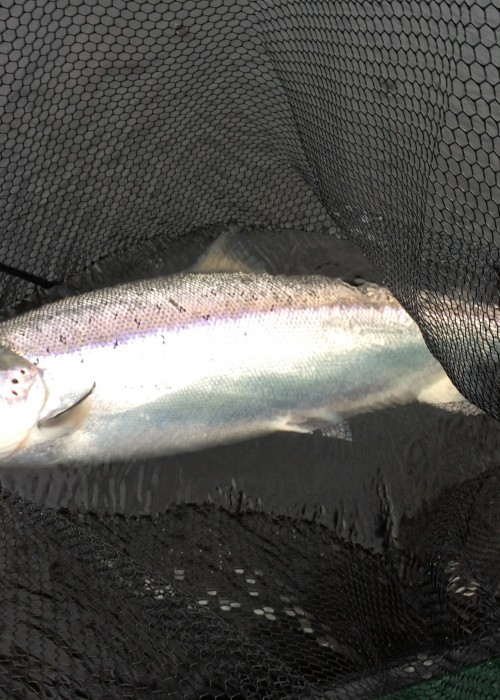
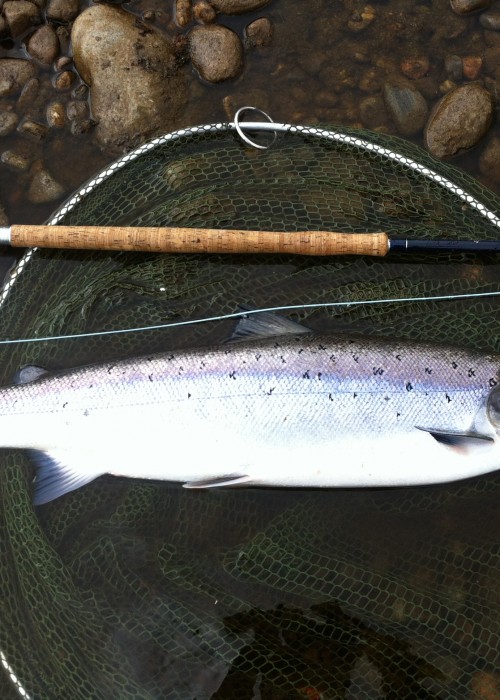
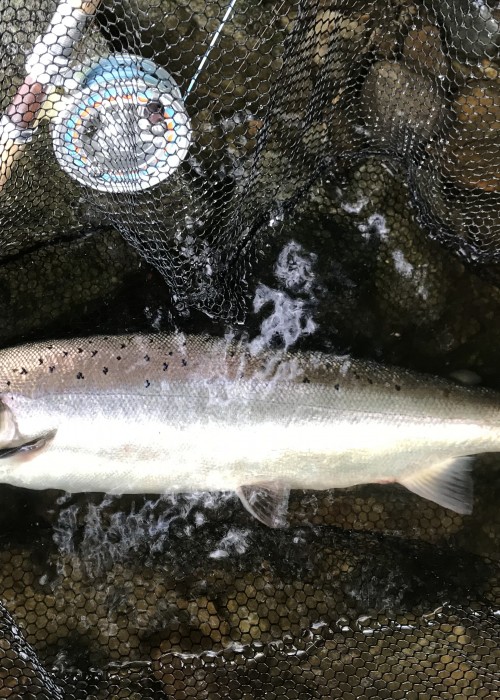
Crucial information on how to effectively set a salmon fly hook during the adrenalin charged moment when a salmon takes your fly.
One of the most important areas of Scottish salmon fishing is knowing exactly how to hook a salmon when it takes your salmon fly. If the entire Scottish salmon fly fishing community fully understood this 'logic backed' procedure I've no doubt Scottish fly fishing rod catches would increase significantly. Follow this link to hire a professional salmon guide and learn everything stated below and many more vital salmon fishing skill components for an effective fast start in this glorious pursuit.
What I'm going to advise you has worked well for me in the majority of fishing situations when salmon are behaving and taking like salmon normally do. There are very occasional low warm water conditions that will make older resident salmon behave in a different manner and your professional ghillie will advise on how best to adjust your hooking technique during these brief periods but for the vast majority of salmon takes the fish will take and turn on the fly which is exactly what you're looking for the salmon to do.
As your salmon fly swings over or in front of a fish it normally means a salmon has to come off its lie to intercept the fly whether it be a few feet or several feet from its original holding position. In deep clear water pools this can be a significantly longer distance which means the fish will turn after intercepting your fly if you allow it the time to do so. Not reacting to this initial contact is so important as I'm about to further explain. This however is where the majority of salmon anglers diminish their chances of success by not giving the fish long enough to turn properly and start drawing away. This is especially true of any anglers who have a trout fishing background where immediate hook set is vital for success. Salmon fishing is however a complete polar opposite from trout fishing especially when setting a hook as I'm about to explain.
Once a salmon takes the fly you'll feel an initial gentle tug followed by more definite tugs on your fly reel and at this vital moment the mantra for your head is 'do nothing' even though you'll feel compelled to react. Let these initial tugs develop into a steady draw of line from your fly reel as this is your clear indicator that the salmon has turned and is on its way back to its original holding position. There can be on average several seconds of tugs but you must wait until a steady draw of line from your fly reel commences and then at least a 'further' 6 seconds of the steady line draw before reacting in the correct manner to ensure that a solid well set hook hold is achieved. This waiting requires serious composure so dwelling on the words 'do nothing' will assist you in doing just that.
At the critical moment where you're just about starting to feel that you've given the fish too much time set the hook by simply clamping the face of your fly reel and keep the rod pointing down in the direction of the fish. If you don't panic and time this correctly at a minimum of 6 seconds 'after' the fish has started steadily drawing away from you then you'll certainly apply sufficient hook point pressure to set the hook properly. When you do this you only need to feel the weight of the salmon (as you stop it in its tracks) for a further few seconds before then finally lifting the rod as perfectly recited by famous UK angler Keith Arthur of Sky Sports in the accompanying video (at 2:05 minutes) when I helped him to catch his first ever salmon. The weight you'll briefly feel assures you that 'effective' hook point pressure has been applied as all that's momentarily between you and the hook point will be the minimal core stretch of your fly line and nothing else. This hooking procedure should make perfect logical sense if you think about it but beware as it could trigger memories of missed hooking opportunities too!
If you use the often taught 'let the take develop and then just lift into the fish' technique logic should tell you there's a fair chance the hook will only be partially set therefore the salmon will likely get rid of your fly shortly into the fight and they are indeed true experts at doing that. So remember my recommended salmon hooking procedure and always feel the salmon's weight (for at least a few seconds) prior to lifting the rod. If you do so the fish will never come off or I certainly can't remember a salmon ever doing so after being properly hooked. Logic should also tell you that the traditional 'just lift into it' method can never apply the same level of 'effective' hook point pressure at the critical moment via a lightly set reel clutch and soft actioned rod. Be honest with yourself and stop thinking blowing hooking opportunities are just part of the game as all hard earned salmon takes should be fully capitalised on and not squandered. There's no worse feeling in this world than that of a slack line following the shot of adrenalin from a definite salmon fly interception so best avoid that feeling and make each hard earned salmon take count all the way to the landing net.